Cognitive Load Theory. Part 2: How to Manage Your Memory while Accelerating Learning and Teaching
This is the second part of our articles about cognitive load. Previously, we discovered that cognitive load refers to the amount of information that must be retained in memory to solve problems, learn new...

This is the second part of our articles about cognitive load. Previously, we discovered that cognitive load refers to the amount of information that must be retained in memory to solve problems, learn new material, or pass exams. When there is too much information, the brain struggles to process it, making learning ineffective or futile. Now that you understand how our memory functions and why this occurs, let's explore how to distribute the cognitive load properly. How can we manage it effectively and prevent overload?
A guide to strategies for minimizing external cognitive load
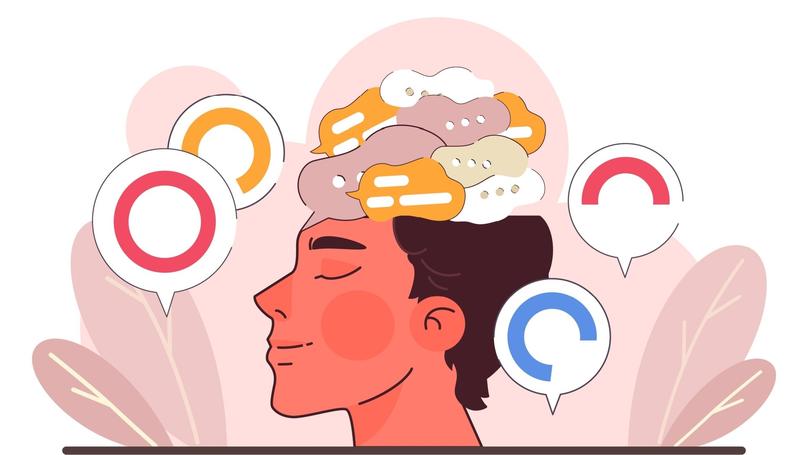
It's enough to focus solely on reducing external cognitive load without addressing other types. This includes eliminating distracting factors such as confusing narrative logic, poorly organized materials, unnecessary noise, inadequate lighting, and uncomfortable temperatures. Therefore, these are the things we need to tackle. So, what steps should we take?
Step 1. Create a comfortable space
To effectively master new material, it's crucial to be in a familiar and comfortable environment in every aspect. Aim to eliminate or at least minimize the impact of external factors. For instance, it's better to do homework in a room with windows facing a quiet courtyard rather than a noisy road. Identify and note down what distracts you during the process: a cat bothering your feet, loud voices from the next room, an aching back from an uncomfortable chair, or strained eyes due to a flickering lamp. Try to eliminate or reduce these distractions as much as possible for a while.
Step 2. Utilize multiple information channels simultaneously
To avoid overloading your memory, it is essential to absorb new knowledge in small doses from various channels. This allows the brain to process the information in two ways and, in parallel, enhances retention. Video tutorials are an excellent choice, enabling you to listen to the presenter and visually observe their actions. Podcasts are not ideal for learning knowledge, as they deliver information solely in an auditory format, making them better suited for entertainment rather than learning.
It's important to note that information from different channels should ideally complement each other or, even better, completely duplicate each other. However, the combination of "auditory + textual information" is not as effective as "auditory + visual" because when we read, we use our inner voice to pronounce the information. For this reason, this combination won't provide the necessary effectiveness. Instead, it will likely reduce it further by causing distractions.
Step 3. Avoid the effect of redundancy
This refers to an overload of information or overly complex material at the same time. Suppose you need help understanding the material. In that case, it's best to use only one channel of perception simultaneously, at least initially. When first encountering new information, stick to one source. Later, you can add another channel to review and reinforce your knowledge.
Additionally, it's crucial to discern which information is essential for understanding and memorizing the material and which is unrelated and can be skipped. Keep in mind that unnecessary details, especially if overly detailed, can hinder rather than help the learning process.
Step 4. Highlight key points
Even if the new material appears straightforward, it's essential to emphasize key concepts, dates, titles, and other crucial elements from a lecture, webinar, workshop, or presentation. Use colored markers, highlighters, or a unique layout in your notebook to highlight these points. Take separate notes for them and review them independently.
When reading material out loud, you can highlight its meaning through your voice, pauses, and even gestures. This approach helps the brain process information more effectively, even if you emphasize these points.
Step 5. Clarify all the necessary points
In cognitive load theory, the "adjacency effect" suggests that supplementary and explanatory information should be placed next to the word, graph, or any other element requiring clarification. This approach reduces external cognitive load by providing immediate reference information, eliminating the need to search for it or follow links. This helps you stay focused and conserves cognitive resources.
What should be done with the internal cognitive load?
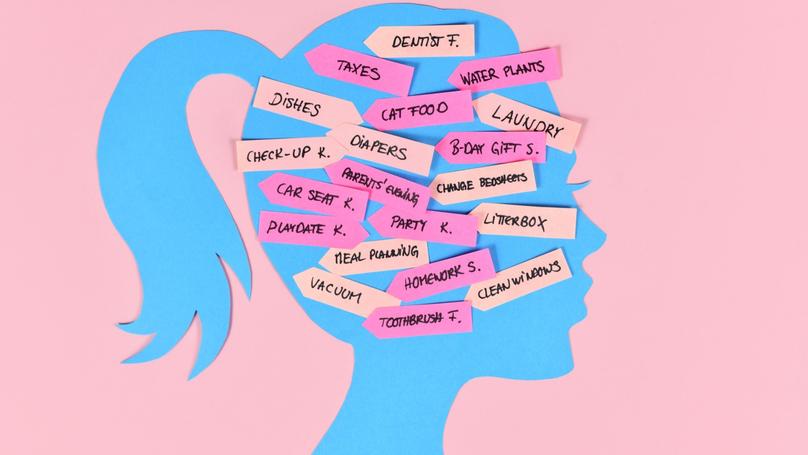
Internal cognitive load, like external cognitive load, is determined by each student's characteristics. The complexity of the educational material and the new topic primarily influences it. The difficulty level, in turn, depends on the student's existing knowledge base, including their skills and abilities.
Internal cognitive load doesn't need to be reduced but somewhat enhanced. Achieving balance is crucial because if learning materials or tasks are too easy, the learner may lose motivation, decreasing learning effectiveness. Here are some tips to help you effectively manage your internal cognitive load:
Method 1. Be consistent
Complex topics, views, and objects should be studied progressively, moving from one level to the next. Start by forming a general understanding of the subject, focusing on its most prominent and typical features rather than in its entirety. Only then should you delve into the specifics and individual features, and only if they are necessary and relevant to your needs. Don't worry if the initial stage takes much time, and avoid rushing into a more detailed study. The quality of learning is far more critical than the speed of mastering the material.
Method 2. Learn from examples
The founder of cognitive load theory, John Sweller, believed that a detailed study and step-by-step assessment of already solved problems can be more effective than independently searching for answers to the same questions. This is because independent results place an additional load on memory and require significant effort, making committing to memory more challenging. Therefore, starting your educational journey, you should study as many similar cases as possible before attempting to solve problems independently based on your reviewed examples.
Method 3. Practice partial solutions
Partial solutions are pre-solved examples with gaps in the variables you must fill. Transition to partial solutions after practicing with fully solved examples before attempting to solve problems from scratch. This serves as an intermediate step between these two stages. The partial solutions method is also proper when you still need to apply your knowledge in practice or when the task involves related areas where you still feel uncertain.
As these three points show, improving your internal load requires a moderate, consistent approach to learning that can be structured from simple to complex.
Techniques for increasing the relevant load
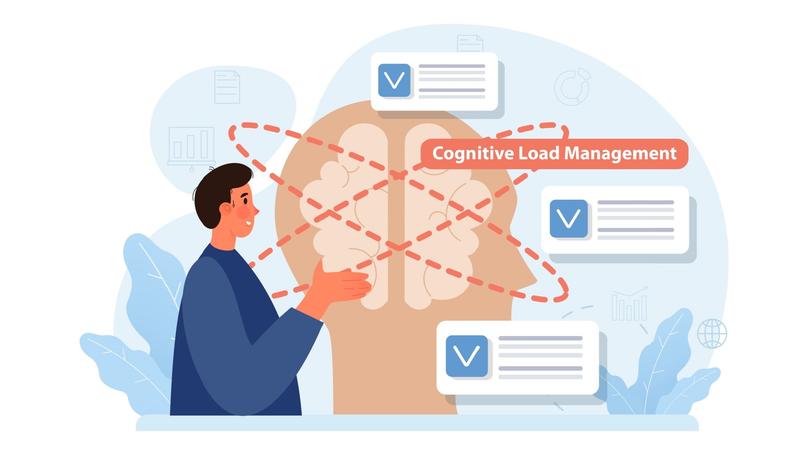
Remember, the relevant load consists of factors that enhance the educational process, helping to organize new information and transfer it to long-term memory. Therefore, the appropriate load should be increased, not reduced! Various techniques and tools can assist with this. Here are some of them.
Technique 1: Refer to your existing knowledge
It's crucial to refer to the information stored in your long-term memory, utilizing existing cognitive frameworks and enhancing them with new facts. This approach helps you update outdated information and refresh your knowledge. Connecting new knowledge to what you already know also accelerates the learning process. This is why it's suggested that new habits be paired with existing ones. For instance, you could do exercises while brushing your teeth with your toothbrush in your mouth, as brushing your teeth is already a part of your daily morning routine.
Technique 2: Moderate your application of scaffolding.
Scaffolding is a technique in which students tackle problems with the assistance of a teacher, mentor, or expert. However, it's important to note that you should seek help only when you need help grasping a topic or issue. If you feel confident in your understanding, it's best to proceed independently.
Technique 3: When you feel confident, decline any further hints
Just as you might decline the help of tutors, try to rely on something other than guides and instructions if you believe you can manage without them. Give it a shot! Using extra information or specific instructions out of habit rather than necessity can diminish the effectiveness of your learning.
Therefore, teaching principles and methods should be tailored to the student's current knowledge level, growing expertise, and memory traits.
Lectera’s Online Courses by topic
How to use cognitive load theory if you are a teacher: recommendations from Lectera experts
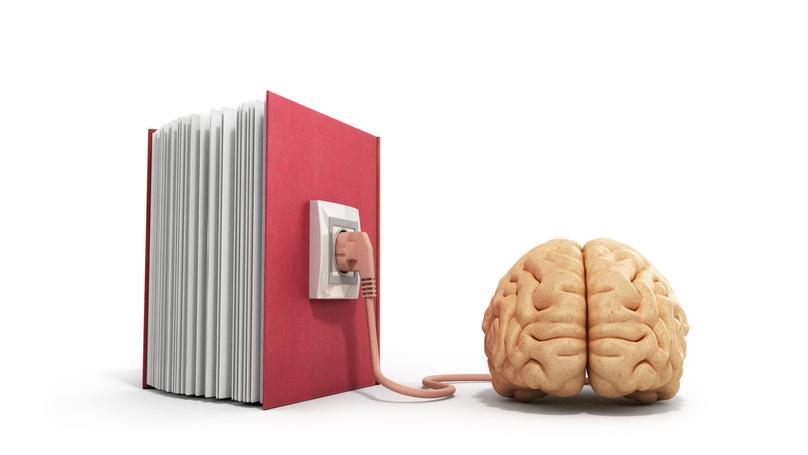
Cognitive load theory is versatile and can be applied for self-study and as a teaching tool across various subjects and disciplines. John Sweller, the concept's originator, specifically recommended it for teachers. Here are some tips on how to apply cognitive load theory with your students. In addition to previously mentioned strategies like eliminating distractions and breaking down the topic, these tips are also relevant.
Tip 1. Eliminate the need to reach a single correct solution
Teachers often assign tasks that require students to find a single correct solution. The focus on this goal can overload working memory. However, the key aspect of learning is not the goal; it is the assimilation and practical application of knowledge. Therefore, John Sweller suggested presenting students with problems that can be approached in multiple ways. For instance, instead of just solving an equation, you could ask students to calculate as many values of variables as possible. This approach not only enhances mathematical understanding but also fosters inspiration and creativity.
Tip 2. Provide multiple formats
Remember to present the same information to students in various formats, engaging different channels of perception. For instance, when explaining material verbally, complement it with graphs, diagrams, and other visuals. Encourage students to conduct experiments independently, examine cases, and solve similar problems using models. Avoid redundancy, and remember that complex topics are best divided into smaller parts. Initially, the material should be presented in a single format before introducing other systems. For example, the first part of the lesson can focus on theory and basic concepts in textbook form. In contrast, the second part can involve practice with slides, interactive activities, and more.
Tip 3. Draw on students' experiences
To enhance material retention and consolidation in long-term memory, it's crucial to revisit recently covered content regularly. Refer to students' existing knowledge, encouraging them to use it actively when tackling new problems. This approach helps update and reinforce old information in their memory.
Tip 4. Be prepared to assist
When students solve problems, the teacher must act as a mentor and assistant. This means doing only some of the work for the student and distancing oneself entirely, as both can significantly increase cognitive load. Instead, the teacher should help the student develop an action plan, a solution procedure, or a strategy for completing the task. Doing this improves the student's cognitive load and helps them remember the sequence of actions for independently solving future problems.
As mentioned earlier, gradually reduce the use of hints. Your assistance is mainly needed by beginners. Students who are becoming more experienced and skilled should be given more freedom. Over time, repetitions of material should also be phased out to avoid increasing the external load.
Tip 5. Reduce the amount of transitional information
This refers to tools and methods for presenting information students can't access later. For instance, textbooks provide constant details since they are always available, unlike a video clip in class. The fewer instances of such transient information, the better. It's preferable to use more accessible and stable formats that remain available over time.
Tip 6. Reduce the impact of divided attention
This effect arises when a student has to use multiple sources of information simultaneously. This increases the load on their working memory and forces the student to switch back and forth, consuming additional resources constantly. Therefore, teachers should integrate all essential data for studying a topic or its aspects into a cohesive area. For instance, relevant explanations should accompany any graph, diagram, or similar component. If the topic references something, provide a reminder of what it is immediately. All the information you discuss and explain should be readily accessible, not buried on "page 459 in the textbook on the left."
Try applying cognitive load theory in practice, and learning becomes more accessible, faster, and more enjoyable! Keep an eye on the amount of information you're handling and take breaks when it feels overwhelming. Remember to follow the advice from Lectera experts and work on enhancing your memory. By reducing external load, optimizing internal load, and increasing the relevant load, you can quickly process and retain information, handle large volumes of knowledge, and avoid fatigue!
Share this with your friends via:
Latest News
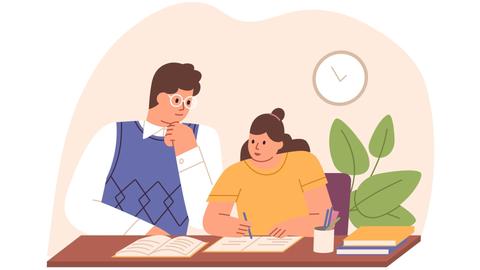
A significant stage in the development of the alternative education system has begun in West Northamptonshire in the UK: the County Council is actively calling on parents, guardians, and trustees to participate in shaping the future of this key area.

Outwoods Primary School in Atherstone, Warwickshire, having experienced deep sadness after the loss of their famous cat, Silla, has found solace in a new pet – a Maine Coon named Aloysius O’Hara.
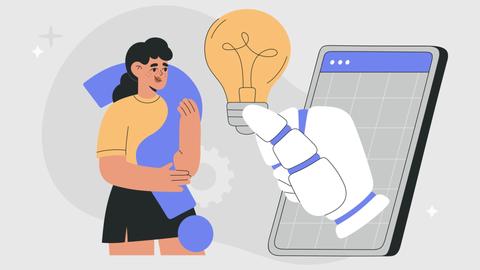
In modern universities, artificial intelligence, and in particular ChatGPT, is rapidly transforming from a controversial tool into a full-fledged student assistant.

An innovative educational project is gaining momentum in UK primary schools, aiming to change attitudes towards video games.
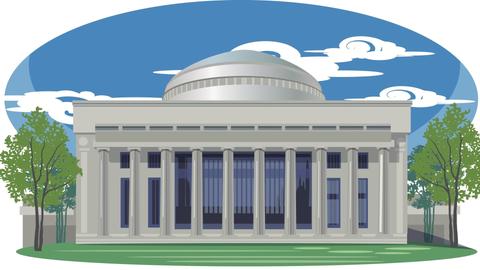
The Massachusetts Institute of Technology (MIT) presents MIT Learn – a revolutionary online platform that opens a “new front door” to access university knowledge and resources.












 How Not to Lose Focus When Learning Everything at Once: The Art of Selective Development
How Not to Lose Focus When Learning Everything at Once: The Art of Selective Development
 Test. What Winter Dessert Are You?
Test. What Winter Dessert Are You?
 What New Skills You Should Start Learning Today
What New Skills You Should Start Learning Today
 Test: What Kind of Ancient Goddess Are You?
Test: What Kind of Ancient Goddess Are You?
 Test: Which Great Woman Would Invite You for Tea?
Test: Which Great Woman Would Invite You for Tea?
 Test: How Well Do You Balance Work and Personal Life?
Test: How Well Do You Balance Work and Personal Life?
